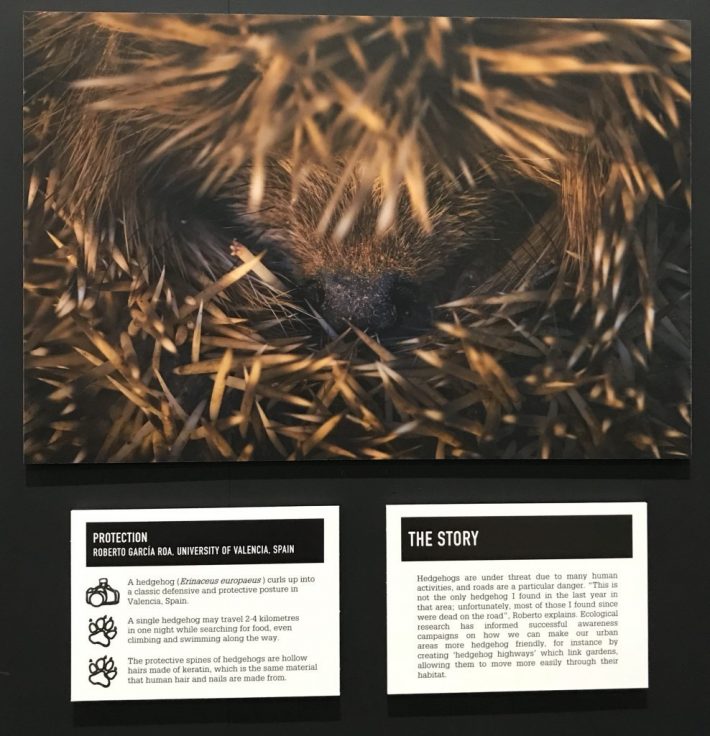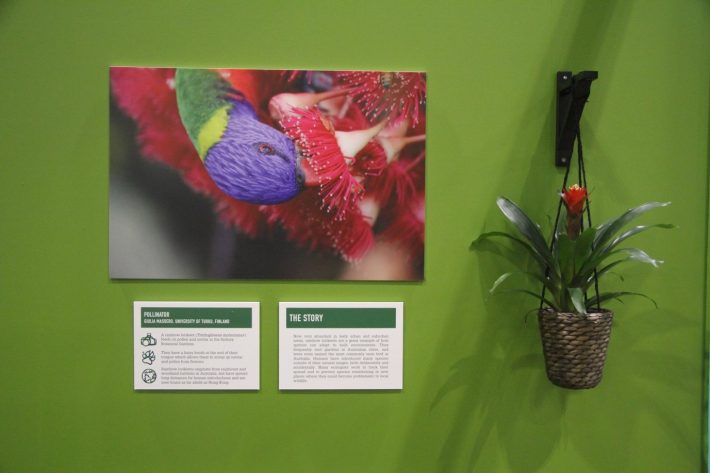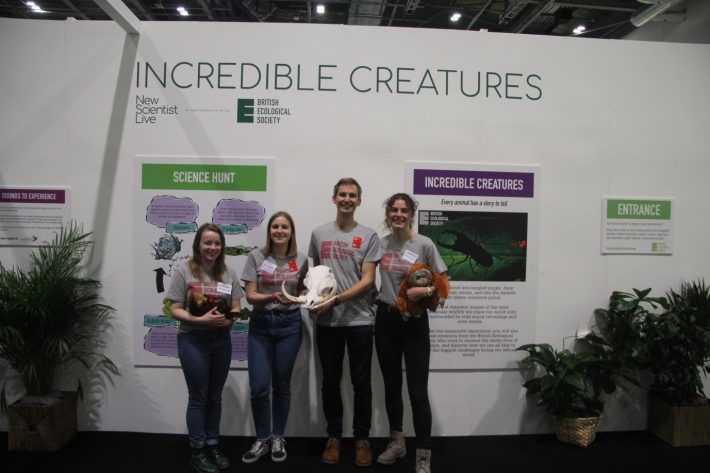From scientist to storyteller: my PhD placement with the BES
Amy Newman is a 4th year microbial ecology PhD student at the University of Warwick. She recently undertook a placement with the BES Public Engagement team, working on the Incredible Creatures exhibition at New Scientist Live.

Since starting my PhD, I have discovered a love for communicating science, both in an academic setting and to broader audiences. I gradually realised that I see myself working to engage people with science more than I do becoming a researcher after I finish my thesis. Last autumn I had the opportunity to explore this path further by working on ‘Incredible Creatures’, the multisensory photography exhibition which headlined the ‘Earth Zone’ at New Scientist Live in London in October 2019.
I was particularly keen to get more behind-the-scenes experience of organising public engagement events through my placement, and this was made possible by my doctoral training programme, NERC’s CENTA, which encourages PhD students to undertake funded work experience to enhance our CVs.
Work in progress: telling the stories
The core feature of the exhibition was a collection of stunning photographs taken around the world, and my main task was to create informative and engaging signs below the images to help tell their stories.
We wanted to showcase both the fascination of the species we featured, and the important ecological contexts behind the images. We decided to do so by creating two complementary signs for each image, displaying both the key interesting facts about each species, and a more in-depth story relating to it.

I researched the species featured – a refreshing change from the microscopic world I’m used to dealing with! – and contacted the photographers for extra insider information and their personal stories on how the images were captured.
I found it satisfying to come up with short but informative pieces, picking out the most exciting details to draw in visitors and convey the ways ecologists are finding positive solutions to global challenges. Writing in a more casual and less academic style was difficult at first, but it’s a vital skill that I’m glad I was able to practise.
Throughout, I learned the importance of collaborating both within and between teams, and making the most of others’ skills.
Feedback was an important part of the process and I learnt how to implement it to transform initial ideas into final products. The perfect opportunity to test our content came when the BES held a party to celebrate their recent move into their slick new office. We previewed a select few images and their captions, complete with the sounds and smells that would be accompanying them at the event.
Seeing our signs in physical form, and getting feedback from the evening’s guests, proved valuable in fine-tuning our content. We made some changes, particularly to the aesthetic of the signs, which we decided had been too “pirate-esque” initially (we’d rather not share a photo of this first attempt!). Throughout, I learned the importance of collaborating both within and between teams, and making the most of others’ skills.

The event
Once the set-up day arrived, it was all hands on deck to put together the exhibition. I experienced the running of a large event from beginning to end, as I helped to organise the courier, ensured all our equipment was in order, and worked with other team members to oversee the building of our exhibit and install our multisensory elements.
Then the exhibit was open to the public! Over four days I was responsible for a combination of visitor-facing and organisational activities. These ranged from recording visitor numbers to chatting with schoolchildren about their favourite images. I even stepped in to deal with a cockroach-related incident!
This placement confirmed that I definitely wish to find work in engaging wider audiences with science
After the event I also found out more about methods to evaluate visitors’ experiences, and created a feedback form for our volunteers to find ways that it could be made even better next time.
This placement was an incredibly valuable experience, and confirmed that I definitely wish to find work in engaging wider audiences with science after I finish my PhD. I now have a much greater understanding of what is involved behind the scenes when organising large events.
Reflections
My placement also prompted me to reflect on how learned societies, and ecological causes in general, may approach their public engagement strategy in particular ways, considering their audience and intended message. I think that it is vital to share the importance of ecology, particularly given the global environmental challenges we face, so I found it very rewarding to see so many people fascinated by our incredible images and their stories.

Even though I was only with the BES for a few weeks, I was impressed by how friendly and supportive all of the staff were. This placement has filled an important gap in my CV, and increased my knowledge and confidence in event planning.
Perhaps best of all, it feels great to have made a genuinely useful contribution to the exhibition, and to have seen so many visitors interested in the signs I wrote. I am grateful for the warm welcome I received at the BES and to my doctoral training programme for funding this placement, and I highly recommend the BES as a host for a placement or internship.
Like what we stand for?
Support our mission and help develop the next generation of ecologists by donating to the British Ecological Society.